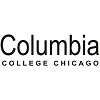Columbia College Chicago (Columbia) provides several degree programs that are suitable for students seeking careers in AR/VR. Options include the Immersive Media (IM) BA and minor; the Programming BA, BS, and minor; the User Experience and Interaction Design BA; the User Experience minor; and the Game Design minor.
With concentrations in Application and Game Programming, the Programming BA and BS programs highlight courses that explore scripting, game development, programming, and physical computing. A team environment allows students to collaborate on AR/VR projects, developing games, and other projects to build a professional portfolio.
The User Experience and Interaction BA highlights courses that explore programming, physical computing, and user research and design. In the classroom, students will work on team projects in an environment that simulates today’s studios, offices, and labs. Outside of the classroom, BA students will intern at places such as NetherRealm Studios, Bethesda Softworks, High Voltage Software, WMS Industries, and Braintree.
For the final project, students will have the opportunity to create and execute solutions for real clients such as the Field Museum, Six Flags, and the Special Olympics.
The Immersive Media BA program at Columbia College is the top choice for students seeking careers in AR/VR. This program focuses on developing technical and creative skills related to augmented, virtual, and mixed reality (AR/VR/MxR). This includes programming, spatial computing, interaction design, and data visualization. Students in the program will have opportunities to build immersive experiences for applications such as games, engineering, healthcare, entertainment, and the science fields.
Course examples for the program include Immersive Environments I-IV; Programming I-I; Experience Design; Algorithms; Story Development for Interactive Media; Interface Design; AI Programming; Studio Collaboration; and Advanced Game Scripting and Environments.
Other IM program features include a collaborative environment, portfolio development, and the opportunity to participate in or present at events such as the Augmented World Expo (AWE), the VRAR Association of Chicago (career fairs and events), the Game Developers Conference (GDC), the Chicago Toy and Game Fair (required), and Industry Night and Manifest.
In the final year of the IM BA program at Columbia College Chicago, students will work in teams to develop a public immersive experience.
While Columbia’s BA and BS programs provide heavy AR/VR coursework, minors allow students to take on additional AR/VR-related courses that may not be offered through the degree program. The IM minor highlights courses such as Immersive Environments I-II; Wearable Interfaces; and Sound for Interaction. The Programming minor allows students to select courses from multiple elective tracks, in addition to taking the required courses. Course examples include Programming I-II; Application Design; C++ Programming; Code; and Data Design for Applications.
The 18 credit hour User Experience minor consists of courses such as Prototyping Strategies; Interface Design; Information Architecture; and Experience Design, and the Game Design minor is an interdisciplinary program that consists of AR/VR-related courses that cover areas such as integrated scripting/programming, system design, user experience, and level design. Minors are 18 credit hours.
In addition to AR/VR-related programs, Columbia houses a number of creative spaces and facilities that support projects of all kinds, including immersive technologies. Spaces and facilities include the Media Production Center; equipment case with HD video cameras, DSLR cameras, microphones, audio recorders; the Fabrication Lab (Fab Lab); and Computer labs equipped with DSLR cameras, microphones, HD video cameras, and audio recorders.
Graduates of the IM, Programming, and User Experience and Interaction Design programs at Columbia College Chicago are prepared to pursue careers in areas such as virtual reality design and development, immersive media, programming, game design and development, simulation design, user experience, immersive storytelling, augmented reality design and development, interface or industrial design, product development, immersive information visualization, user experience design for immersive media, web development, and software engineering,
Nearly 90% of Columbia College graduates report being employed within a year of earning their degrees. Across programs, alumni can be found at places such as Adobe, Leo Burnett, Microsoft, Coca-Cola, BBDO, Google, IBM, Riot Games, Jellyvision, Motorola, NYTimes, Razorfish, SapientNitro, TIME Studios, Venmo, Pandora, IBM, Deloitte, PayPal, Edelman, Moxie, Midwest Immersive, and 8i Studio.
Columbia College Chicago was established in 1890 as the Columbia School of Oratory. This private nonprofit college serves nearly 6,700 students enrolled in more than 60 undergraduate and graduate degree programs in the creative and media arts, liberal arts, and business. Columbia College Chicago is accredited by the Higher Learning Commission (HLC).



























